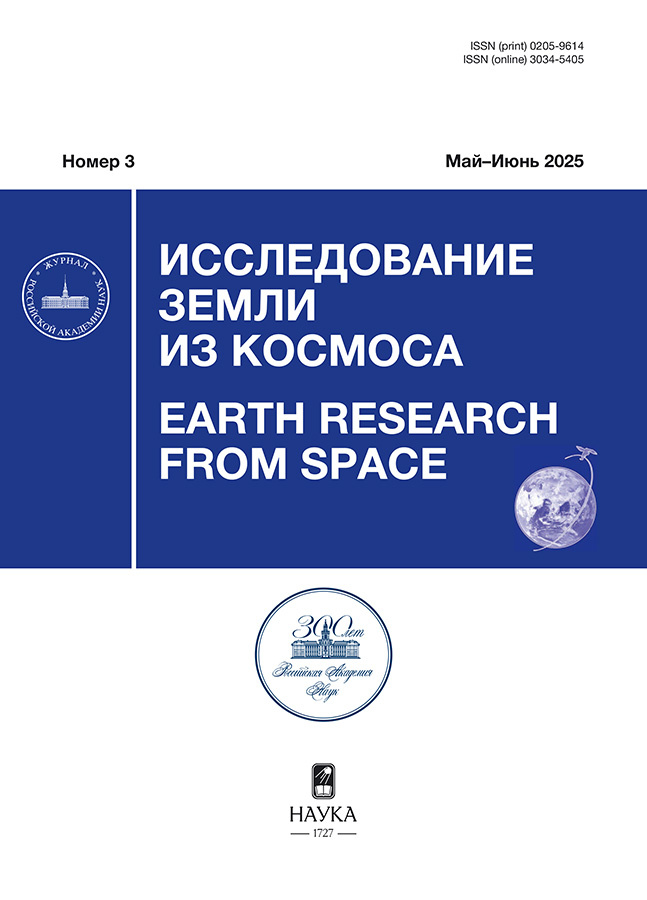Mean Circulation of the Japan Sea from Drifter Data and Satellite Altimetry Observations
- Авторлар: Zhabin I.A.1, Taranova S.N.1, Luk'yanova N.B.1
-
Мекемелер:
- V.I. Il'ichev Pacific Oceanological Institute, Far Eastern Branch of the Russian Academy of Sciences
- Шығарылым: № 3 (2025)
- Беттер: 72-84
- Бөлім: ИСПОЛЬЗОВАНИЕ КОСМИЧЕСКОЙ ИНФОРМАЦИИ О ЗЕМЛЕ
- URL: https://journals.eco-vector.com/0205-9614/article/view/693432
- DOI: https://doi.org/10.7868/S3034540525030063
- ID: 693432
Дәйексөз келтіру
Аннотация
Knowledge of long-term mean by highly variable currents is essential to understanding the regional climate change in the Japan Sea. Strength and location of the major currents can be identified from the subsurface drifter observation (Global Drifter Program, 1988-2023) and surface absolute geostrophic current field (AVISO satellite altimetry, 1993-2022). The well-known circulation patterns are observed, as the Tsushima Warm Current (TWC), the East-Korean Warm Current (EKWC), the Primorye (Liman) Current, Subpolar Front Current, and the northern cyclonic gyre. A detailed analysis of the surface current field showed that the EKWC in the western part of the Sea of Japan forms three anticyclonic meanders. The well pronounced eastern meander (branch) of this current is observed in the Ulleung Basin. The second meander is formed due to flow separation from the coast in the area of East Korea Bay. The third meander is observed in the northwestern part of the Sea of Japan. The Primorye Current breaks away from the coast of Primorye in the area of Peter the Great Bay and follows to the Subpolar front.. The interaction of the Primorye Current with the northwestern meander of the EKWC leads to the formation of the northwestern dynamic front. Our analyses revealed that the TWC is divided into the nearshore (coastal) branch and three branches of offshore TWC. Formation of the Subpolar Front Current in the western part of the sea is determined by the waters of the ECWT. The Primorye Current affects the northern dynamic boundary of this frontal zone. In the central and eastern parts of the Sea of Japan, the subpolar front is connected with the TWC. The northern cyclonic gyre is formed by the continuation of the TWC along the coast of Hokkaido Island, the Primorye Current and the Subpolar Front Current. The mean locations of major surface currents were explicated relative to topographic features with schematic representation of surface circulation.
Авторлар туралы
I. Zhabin
V.I. Il'ichev Pacific Oceanological Institute, Far Eastern Branch of the Russian Academy of Sciences
Email: zhabin@poi.dvo.ru
Vladivostok, Russia
S. Taranova
V.I. Il'ichev Pacific Oceanological Institute, Far Eastern Branch of the Russian Academy of SciencesVladivostok, Russia
N. Luk'yanova
V.I. Il'ichev Pacific Oceanological Institute, Far Eastern Branch of the Russian Academy of SciencesVladivostok, Russia
Әдебиет тізімі
- Жабин И.А., Таранова С.Н., Талли Л.Д.Промежуточные воды повышенной солености в северной части Японского моря // Метеорология и гидрология. 2003. № 4. С. 63‒72.
- Никитин А.А., Дьяков Б.С., Капшитер А.В.Приморское течение на стандартных разрезах и спутниковых изображениях Японского моря // Исслед. Земли из космоса. 2020. № 1. С. 31‒43.
- Шренк Л.О течениях в Охотского, Японского и смежных с ними морей. По термометрическим наблюдениям, произведенным на русских военных судах. СПб., 1874. 112 с. Приложение к 23-му тому Записок Императорской академии наук, № 3.
- Юрасов Г.И., Яричин В.Г.Течения Японского моря. Владивосток: Дальнаука, 1991. 176 с
- Chang K.I., Zhang C.I., Park C., Kang D.J., Ju S.J., LeeS.H., Wimbush M.Oceanography of the East Sea (JapanSea). Springer:Berlin/Heidelberg, Germany. 2016. Р. 87‒126.
- Laurindo L., Mariano A., Lumpkin R.An improved near-surface velocity climatology for the global ocean from drifter observations // Deep-Sea Res.2017.V. 124. P. 73‒92.
- Lee D.-K., Niiler P.P. The energetic surface circulation patterns of the Japan/East Sea // Deep Sea Res. 2005. V. 52. № 11–13. P. 1547–1563.
- Lumpkin R., Johnson G.C. Global ocean surface velocities from drifters: mean, variance, ENSO response, and seasonal cycle // J. Geophys. Res. 2013. V. 118. P. 2992‒3006.
- Nikitin A.A., Tsypysheva I.L., Zuenko Y.I.Spatial patterns of the Primorye Current in the northwestern East/Japan Sea on satellite images and standard sections // Ocean Sci. J. 2023. V. 58. 22.https://doi.org/10.1007/s12601-023-00116-z
- Park K.-A., Chung J.Y., Kim K.Sea surface temperature fronts in the East (Japan) Sea and temporal variations // Geophys, Res. Lett. 2004. V. 31, L07304. doi: 10.1029/2004GL01942.
- Park K.-A., Park J.-E., Choi B.-J., Byun D.-S., Lee E.-I.An oceanic current map of the East Sea for science textbooks based on scientific knowledge acquired from oceanic measurements // J. Korean Soc. Oceanogr. 2013. V. 18. P. 234‒265.
- Talley L.D., Min D.-H., Lobanov V.B., Luchin V.A., Ponomarev V.I., Salyuk A.N., Sherbina A.Y., Tishchenko P.Y., Zhabin I.A.Japan/East Sea Water Masses and Their Relation to the Sea's Circulation // Oceanography. 2006. V. 19. № 3. P. 32–49.
- Wang H., Ren K., Lina M., Yu C., Chen W., Zhang W.Long-term mean circulation in the Japan Sea as reproduced by multiple eddy-resolving ocean circulation models. Front. Mar. Sci. 2022. V. 9:1050028. doi: 10.3389/fmars.2022.1050028.
- Yabe I., Kawaguch Y., Wagawa T., Fujio S.Anatomical study of Tsushima Warm Current: Determination of principal pathways and its variation // Prog. in Oceanogr. 2021. 194. 102590. https://doi.org/10.1016/j.pocean.2021.102590, 2021.
Қосымша файлдар








